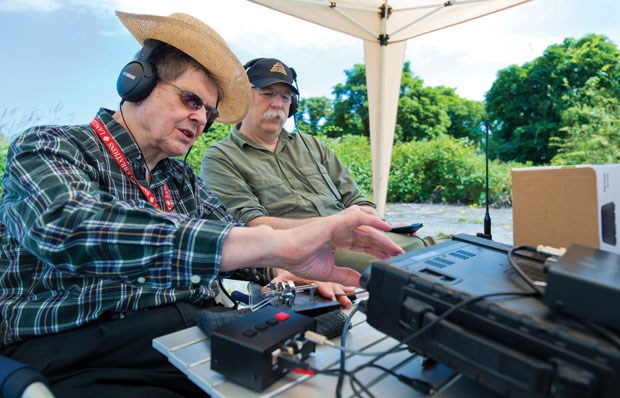Members of the Delta Amateur Radio Society will be participating in the bi-national Amateur Radio Field Day this weekend at the North 40 Dog Park in East Ladner.
Since 1933, ham radio operators across North America have established temporary ham radio stations in public locations during Field Day to showcase the science and skill of amateur radio. The June 25-26 event is open to the public and all are encouraged to attend.
For over 100 years, amateur radio - sometimes called ham radio - has allowed people from all walks of life to experiment with electronics and communications techniques, as well as provide a free public service to their communities during a disaster, all without needing a cell phone or the Internet.
Field Day demonstrates ham radio's ability to work reliably under any conditions from almost any location and create an independent communications network. Over 35,000 people from thousands of locations participated in Field Day in 2015.
It's easy for anyone to pick up a computer or smartphone, connect to the Internet and communicate, with no knowledge of how the devices function or connect to each other, but if there's an interruption of service or you're out of range of a cell tower, you have no way to communicate.
Ham radio functions completely independent of the Internet or cell phone infrastructure, can interface with tablets or smartphones, and can be set up almost anywhere in minutes. That's the beauty of amateur radio during a communications outage.
Hams can literally throw a wire in a tree for an antenna, connect it to a battery-powered transmitter and communicate halfway around the world, using a layer of Earth's atmosphere as a sort of mirror for radio waves.
In today's electronic doit-yourself environment, ham radio remains one of the best ways for people to learn about electronics, physics, meteorology and numerous other scientific disciplines, and is a huge asset to any community during disasters if the standard communication infrastructure goes down.



